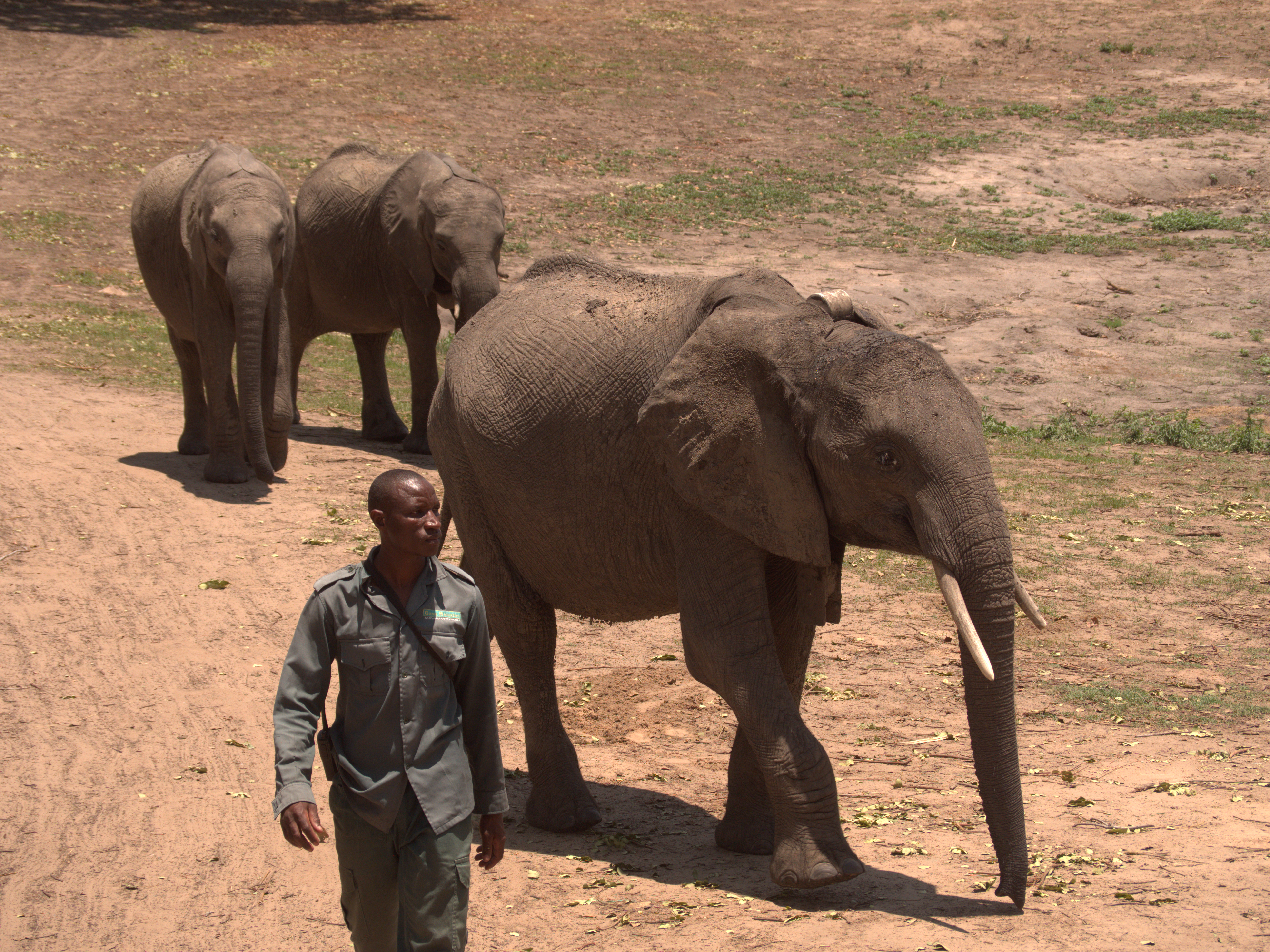Understanding Elephant Emotions
- Madelaine Barr
- Apr 1, 2021
- 2 min read
Updated: Jul 5, 2021
Elephants are highly intelligent animals that have complex emotions, just like humans

A critical part of working with elephants is understanding their emotions. As well as giving an indication of the elephant’s health and welfare, this is also critical for the Wildlife Ranger's own safety.
Working with elephants, especially in a free contact situation (where the Wildlife Rangers share the same space as the elephants) can be very dangerous. Especially with the older bulls who are starting to mature and test boundaries, like those at the Kafue Release Facility. Throughout their training, the Wildlife Rangers are taught to recognise and interpret when there may be something wrong, upsetting or frightening to an elephant, in order to assess the situation and deal with it before it escalates into aggressive behaviour or a safety risk.
These indicators can range from very clear signs of aggression or frustration to very subtle signs of anxiety and nervousness - this may be caused by something in the environment, such as a predator or snake, or a social issue between two elephants, or might indicate that the elephant just isn't feeling well! - the Wildlife Rangers need to be able to 'read' the emotions of the elephants they care for.

Elephants have a wide range of behaviours, some of which are very subtle. As with humans, you sometimes have to look at the circumstances around when are performed to really tease out the possible motivation behind the behaviour. For example, an “alert” posture where the elephants head is held up tensely, ears up and out and back arched looking intently in one direction could mean a threat, for example there is a lion in the distance, or a snake in the grass, but it could also mean a long missed surrogate sibling is on the horizon and they can’t wait to rush and greet them!
Contributor: Lisa Olivier (GRI Head of Research)

















Hyderabad, a city celebrated for its rich heritage, modern lifestyle, and vibrant nightlife, has also become a hub for discreet and elegant companionship. Whether you are a business traveler, a tourist exploring the city, or a local seeking memorable experiences, the presence of call girls Hyderabad offers a blend of sophistication, charm, and pleasure that caters to every desire.
Hyderabad, with its blend of history, modernity, and vibrant social life, is home to a thriving escort industry that offers premium companionship to discerning clients. Whether you are looking for a casual partner for the evening, a travel companion, or a high-class model escort, the city has everything to satisfy diverse preferences.
Read More :- Call Girls Hyderabad | Call Girls Agra | Call Girl Ahmedabad | Call Girl Ajmer | Call…
Vanshika, a well-known name in Gurgaon call girls Service circle, is admired for her confidence, elegance, and ability to light up every room she walks into.
https://vanshikaa.in/call-girls-gurgaon/
https://www.epidemicales.com/post/newsletter-dd-214-release-bogo-pints-for-military?commentId=2827f98e-9e66-4d68-a8b4-698c5401e0cb
https://www.fatemag.com/post/hidden-portals-in-earth-s-upper-atmosphere?commentId=107b194b-b0c6-48d9-8685-962506d9e84e
https://www.exit6filmfestival.com/post/2017/05/25/talking-head-colourist-jason-r-moffat?commentId=e5bc6d68-f370-475b-bfe8-50218357898d
https://www.escapetheroomers.com/post/escape-artists-orlando-dream?commentId=6803f406-0b8e-4b93-9763-795132e46579
https://www.fatemag.com/post/hidden-portals-in-earth-s-upper-atmosphere?commentId=107b194b-b0c6-48d9-8685-962506d9e84e
https://www.firstexposures.org/post/lost-and-found?commentId=e5e61e1d-76fa-493c-82e2-f55d28397b33
https://www.foudart-blog.com/post/la-chute-des-anges?commentId=cc16c4df-9d77-4e8e-b2f1-714a5146740e
https://www.foudart-blog.com/profile/vanshikamehta9263976/profil
Ctqueen is your friendly website where you can search for call girls in your city. It’s super easy. Pick your city, look at profiles, see pictures, and read short info about each girl. If you like one, just click to chat on WhatsApp or give a quick call. No sign-up, no confusion. Just simple steps for what you need. Ctqueen is part of the Indian Call Girls Directory, so everything is organized and made for quick help.
Only real profiles are shown on Ctbeauties. This site is for call girls and agencies who want to post ads with photo and full details. Users can search by city or even local area and find trusted listings fast. Girls post their ads easy – no hard steps, just upload, write and go live. Ctbeauties help girls get more calls and help people find real service without wasting time. It’s used daily by many and trusted for adult listings all over India. Nashik Call Girls
Call Girls In Noida
Pune call girls
Call Girls In Raipur
Our agency proudly presents an elite array of Amritsar Call Girl Service, ready to fulfill your desires for sophisticated companionship. Each lady possesses unique talents and a dedication to ensuring your complete satisfaction. Whether for a quiet evening or a grand event, they promise discreet, high-quality service and engaging interaction.